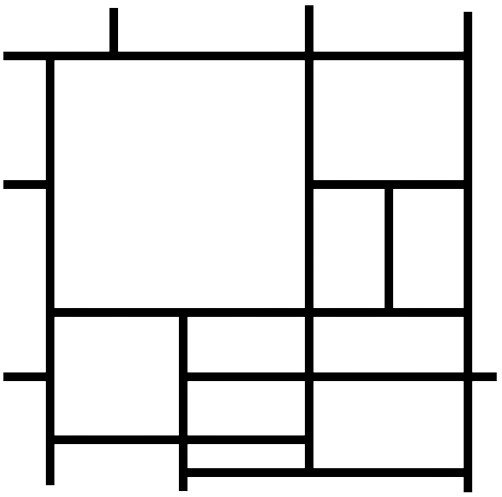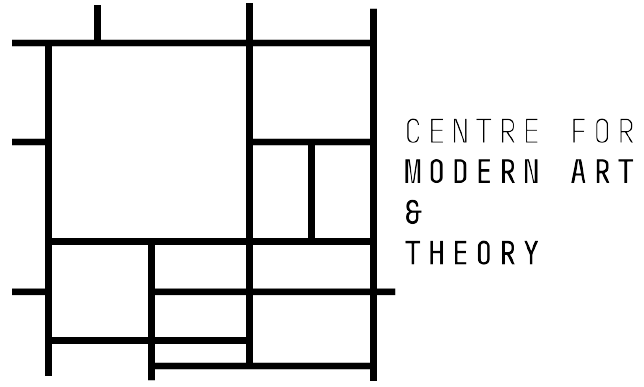Matthew Rampley
Art in Ostrava: The ‘Natural Ones’ and Beyond
Matthew Rampley
Art in Ostrava: The ‘Natural Ones’ and Beyond
A review of Návratný průzkum / Repeated Survey (Prague City Art Gallery, 25th of October 2024 – 9th of February 2025).
It is a much-rehearsed criticism that the art world tends to focus solely on the work of artists and designers based in major metropolitan centres and the capital cities. Activities in, for example, Paris, Shanghai, London, Berlin and New York is exhaustively documented and analysed, while other centres of artistic life have to fight for recognition. The Czech Republic is no exception to this rule. Internationally, it has tended to be relegated to the margins of artworld interest, while Czech criticism and history has traditionally been highly Pragocentric. Works of art and architecture located elsewhere in the country generally play bit parts in a narrative reflecting the interests of the capital.

1. Installation shot of first gallery of Návratný průzkum / Repeated Survey (Prague City Art Gallery, 2024) with, on the right, paintings by Hana Puchová. Photo: M. Rampley.
Only in recent years has there been a concerted effort to change this uneven geography, and it is this impulse that lies behind Návratný průzkum, a presentation of art from Ostrava since 1989. It is a substantial exhibition that gives credibility to the city’s demand for more public attention, and the curators, Martin Netočný, Tomáš Knoflíček, and Jakub Král, have made good use of the space; the rooms of the City Art Gallery are capacious, and some exhibitions there have looked a bit lost, undone by the sheer amount of wall space available.

2. Petr Pastrňák, Untitled paintings from 1997 and 1998 on display in Návratný průzkum / Repeated Survey (Prague City Art Gallery, 2024) Photo: M. Rampley.
Návratný průzkum is the latest in a number of exhibitions that have turned their attention to art outside of Prague; it follows on from the 2022 exhibition Přirození: 1989–1992: Ostravští divocí (The Natural Ones: Ostrava’s Wild Bunch), on the artistic group The Natural Ones, of the early 1990s, as well as earlier examples, such as Ze středu ven: Umění regionů 1985–2010 (From the Centre Out: Art of the Regions, 1985–2010) staged at the Gallery of Western Bohemia in Plzeň (1). What, therefore, do we learn about Ostrava from this exhibition?

3. Petr Pastrňák, Untitled paintings from 1997 and 1998 on display in Návratný průzkum / Repeated Survey (Prague City Art Gallery, 2024) Photo: M. Rampley.
At its core is a fairly straightforward argument. The city had a municipal art gallery, established in 1923, but until 1989 its significance as an art centre was limited, eclipsed by Prague, Brno and Bratislava (2). The end of socialist rule, however, marked a turning point. Post-communist deindustrialization brought about massive social disruption, and there were parallels, the exhibition catalogue notes, with Ustí nad Labem, a similar industrial centre, located at the other end of the country in north-western Bohemia. Yet whereas deindustrialization was a traumatic experience for many in Ustí, artists in Ostrava saw it as presenting a new set of opportunities. It brought about a diminishing of existing institutions, and the creation of new galleries and art spaces in derelict shops, workshops and factories. Ostrava was given a new lease of life, led by The Natural Ones, a group of eight artists. The emergence of this regionalism is presented in the exhibition as a local variant of the wider phenomenon of postmodernism, and there are certainly parallels with tendencies associated more generally with postmodern culture of the final quarter of the twentieth century. The inventive reuse of abandoned industrial spaces was characteristic of so-called young British artists such as Damien Hirst, Tracey Emin and Sarah Lucas, who were establishing themselves in London at the same time (3). The works on display in Návratný průzkum also parallel wider developments in artistic practice, including: a revalorisation of painting as an artistic medium, a renewed interest in figuration, citation of earlier work, alongside an emerging interest in installation (the exhibition included a large-scale installation by František Kowolowski, a finalist of the Jindřich Chalupecký Art Prize in 2000). The exhibition is meant to be a broad survey of art in Ostrava, but the artists whose work features most prominently, Petr Pastrňák, Daniel Balabán and Hana Puchová, were all members of the The Natural Ones group.

4. Installation shot of paintings by Daniel Balabán on display in Návratný průzkum / Repeated Survey (Prague City Art Gallery, 2024) Photo: M. Rampley.
The tone of the exhibion is set right from the beginning (Figure 1), where, to one side of the gallery space, the visitor meets a long sequence of paintings by Puchová from the 1990s and early 2000s depicting certain social ‘types’, while on the other side, as if in a gallery depot or storage space, a miscellaneous assortment of artworks hangs, connoting the very institutional informality that, the curators suggest, was the catalyst of the Ostrava renaissance. Puchová’s social commentary, documenting the emergence of new post-socialist identies in a faux-naif style, is matched by Pastrňák’s meditations of the legacies of painting after the declaration of the demise of modernism. Like many artists elsewhere in Europe working in the 1990s, his paintings (Figures 2 and 3) from the same period explore and combine the different vocabularies and semiotic codes of abstraction, in a kind of post-historical reflection on the viability of painting. A number of influential authors in the 1980s, such as Linda Hutcheon, Benjamin Buchloh and Frederic Jameson, equated postmodernism with the politics of pastiche; all that was left for artists, they argued, was to pick over the fragments of an exhausted tradition (4). It is difficult to know whether Daniel Balabán read these amd similar essays, but the paintings on display here (Figure 4), with conscious quotations from artistic tradition, including Picasso, suggest a conscious reference to such postmodernism theories. For this visitor, Balabán’s paintings were less convincing meditations on the history of painting than those of Pastrňák, for they displayed an overly literal engagement with the condition of epigonality, as if designed to be used as illustrations in some art school seminar. More intriguing were more recent works, such as Marius Korba’s series of wall sculptures completed between 2001 and 2010 (Figure 5), that seemed to evoke interwar modernist traditions of architectural sculpture or some of the earlier figurative scultures of Ladislav Zivr, or a group of paintings by Filip Nádvorník, Mower (2020), Builders (2019) and Hewing (2019) (Figure 6). These were a parody of the heroic subject matter of Socialist Realism, mimicking its clichéd rhetoric, but in a formal language that owed more to Neo-Expressionism. In contrast, Jiří Surůvka’s Pinocchio and Death (2003) (Figure 7) diminished the overall tenor of the show, immersed in the trivialising sensibility of Jeff Koons or Maurizio Cattelan.

5. Marius Korba, Assorted wall sculptures (2001–2011) on display in Návratný průzkum / Repeated Survey (Prague City Art Gallery, 2024). Photo: M. Rampley.
The exhibition is accompanied by a bi-lingual publication, which is less a catalogue and more a separate institutional history of the Ostrava art scene since the 1990s (5). It is a really helpful contextual guide, although it is a pity that there is not more extensive commentary on individual works on display. Indeed, the ‘catalogue’ diverges from the exhibition in an important respect. For the emphasis of the latter is on painting and sculpture (with a few exceptions) whereas the publication shows that art in Ostrava was much more diverse. If there was to be any criticism, it would be that the exhibition ends up just being a survey of works by a range of individual artists, and although it is thematically organised, the themes are not particularly well explained. At the same time, however, it is still a valuable and informative exercise that highlights the vibrancy of art centres outside of the capital. As a consequence, it is definitely worth a visit.

6. Installation shot of gallery of Návratný průzkum / Repeated Survey (Prague City Art Gallery, 2024) with, on the left, Filip Nádvorník, Mower (2020), Builders (2019) and Hewing (2019). Photo: M. Rampley.

7. Jiří Surůvka, Pinocchio and Death (2003) on display in Návratný průzkum / Repeated Survey (Prague City Art Gallery, 2024) Photo: M. Rampley.
(1) Renata Skřebská, Přirození: 1989–1992: Ostravští divocí (Ostrava, 2022); Michal Koleček, Ze středu ven: Umění regionů 1985–2010 (Plzeň, 2015).
(2) On the history of the art gallery see Jiří Jůza, Jurečková obrazárna: Počátky galerijní činnosti v Ostravě (Ostrava, 2006).
(3) Julian Stallabrass, High Art Lite: British Art in the 1990s (London, 1999).
(4) Linda Hutcheon, The Politics of Postmodernism (London, 1989); Benjamin Buchloh, ‘Figures of Authority, Ciphers of Regression: Notes on the Return of Representation in European Painting,’ October 16 (1981) pp. 39–68; Frederic Jameson, ‘Postmodernism, or The Cultural Logic of Late Capitalism,’ New Left Review 146 (1984) pp. 53–92.
(5) Martin Netočný, Tomáš Knoflíček, Návratný průzkum: Vazby, struktury a proměny ostravské umělecké scény / Repeated Survey: Relations, Structures, and Transformations in the Ostrava Art Scene (Prague, 2024).


